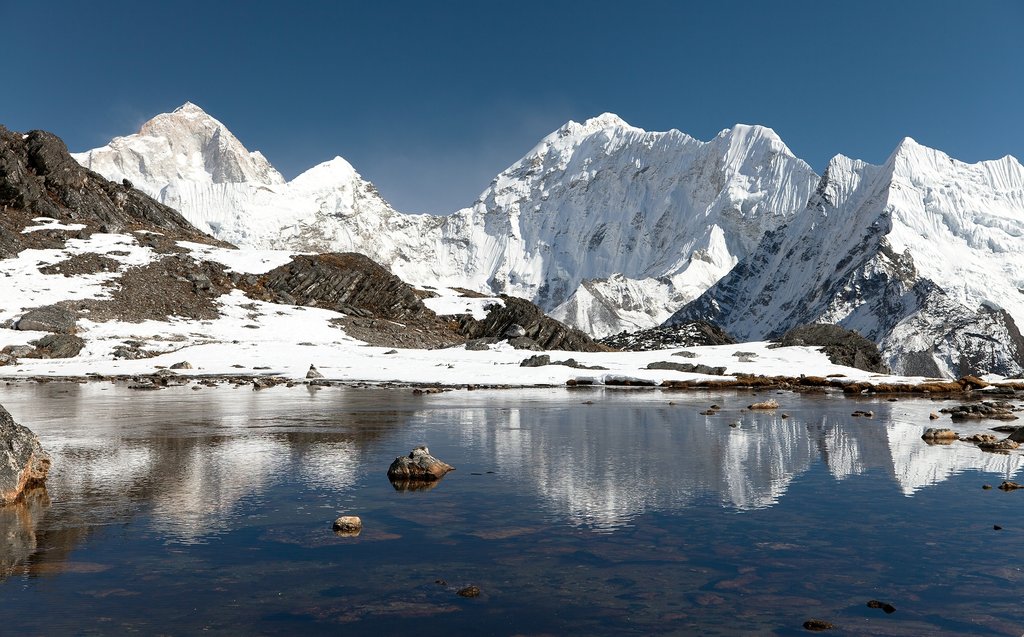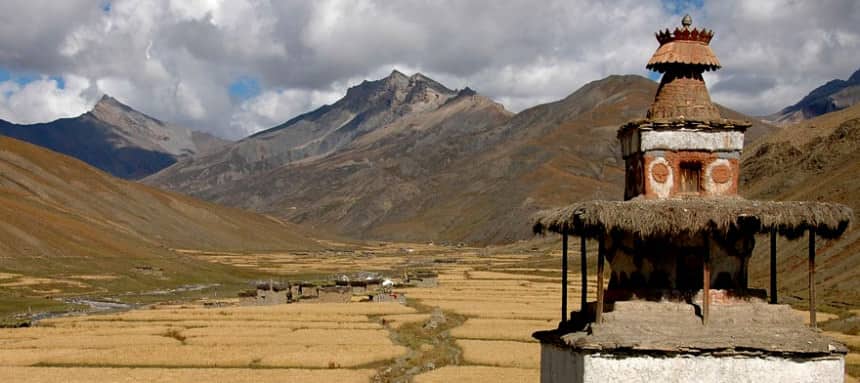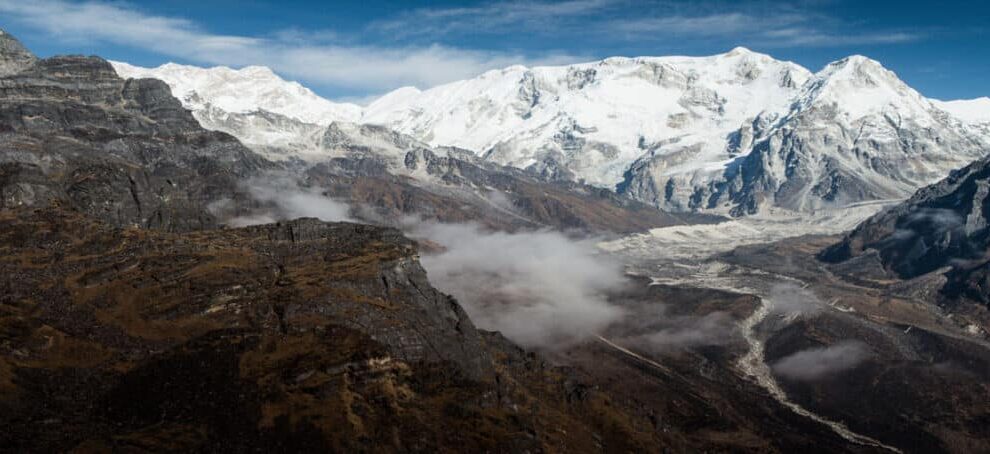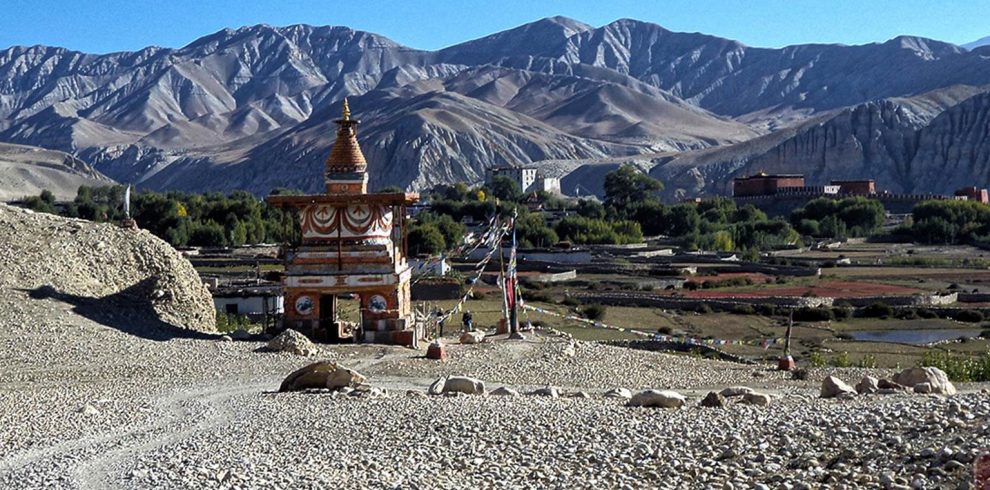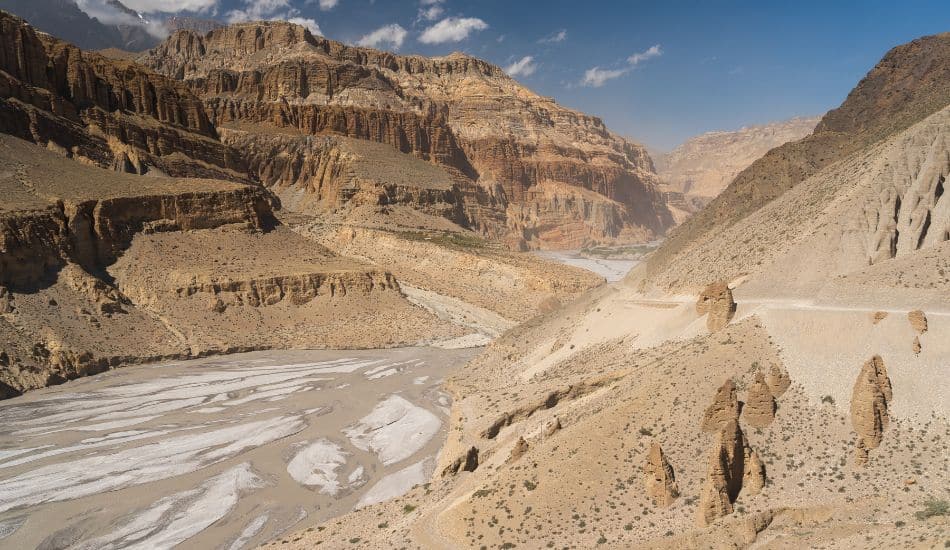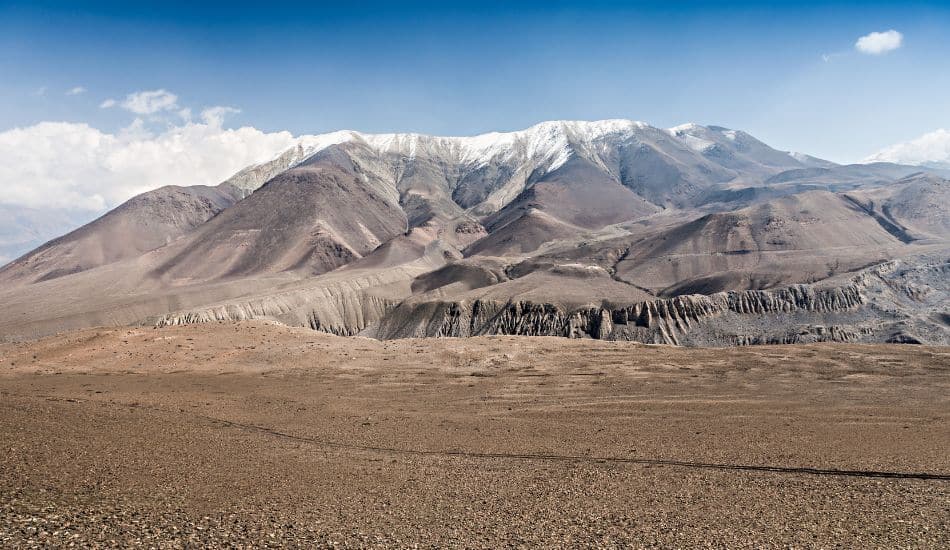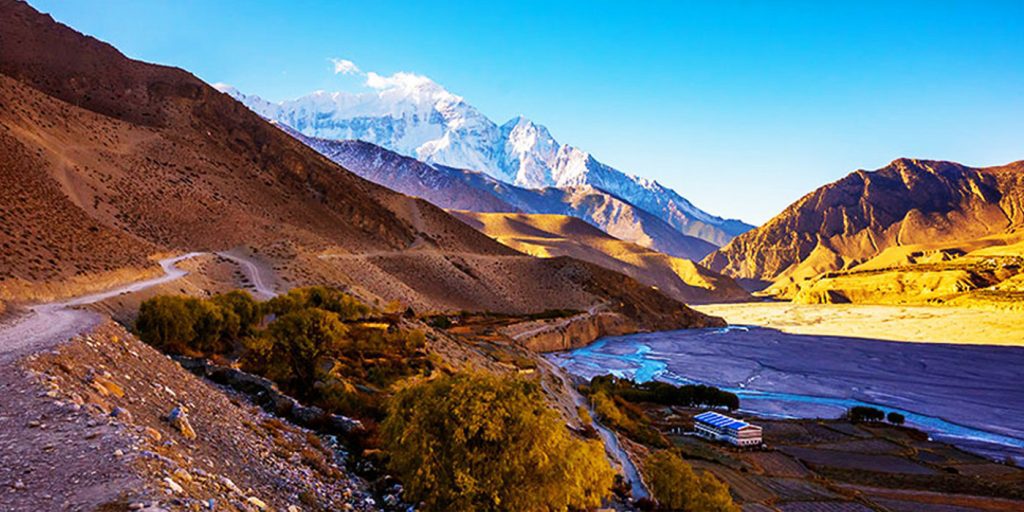-
Hotels & Guesthouse
-
Kathmandu
-
March to May & Sep to Dec
-
Tourist Bus & Private Vehicle
-
Moderate
-
4500 M
-
Eco-Tour, Hiking, Trekking
-
2-22
Makalu Base Camp Trekking Overview
Makalu Trekking takes you to the fifth highest mountain in the world, which lies just southeast of Mt. Everest and is accessed from the eastern Arun Valley. Makalu Basecamp Trekking offers an exceptional opportunity to explore high-altitude terrains, snow-clad landscapes, and the ethnic Himalayan lifestyle. This trek provides fabulous views of rocky Himalayan peaks, including Mt. Makalu (8,463m), Mt. Chamlang (7319m), Mt. Barun Tse (7129m), and many more. The trek passes through the Makalu-Barun National Park, established in 1992, which is a crucial conservation area for many bird species, some of which are on the verge of extinction.
Makalu Trekking offers a noteworthy and diverse habitat for a rich variety of flora and fauna and is rich in natural resources, including beautiful mountains, pristine forests, wildlife, and the simple, warm-hearted local people with their rich and varied traditions. The trek offers stunning natural scenery, and the main point of interest is the Makalu Barun National Park and Conservation Area, which is home to various wildlife species. The trek involves crossing the Shipton La Pass (4210m) and entering the upper Barun River valley for a closer view of Makalu and Chamlang Himal.
We begin our 22-day journey in Kathmandu with visits to UNESCO World Heritage sites before heading to the most memorable trekking trip: the Makalu Basecamp Trekking.
Aarohi Holiday always welcomes you for this trip and ensures your journey is filled with wonderful memories.
Makalu Base Camp Trek Highlights
- Trek to the base of Makalu (8,463m), the fifth highest mountain in the world, and enjoy views of Chamlang (7,319m) and Barun Tse (7,129m).
- Explore high-altitude terrains and snow-clad landscapes, including the stunning Makalu-Barun National Park.
- Discover a rich habitat with rare bird species, diverse wildlife, and pristine forests.
- Engage with local communities and experience their simple and warm-hearted traditions.
- Cross the Shipton La Pass (4,210m) for spectacular views of the Makalu and Chamlang Himal.
- Start with a 22-day trip from Kathmandu, including visits to UNESCO World Heritage sites before embarking on the Makalu Base Camp trek.
Makalu Base Camp Trek Itinerary
Upon your arrival at Tribhuvan International Airport, we offer you a pick-up facility from the airport and manage your stay at the most comfortable hotel in the city. You get to meet the team of trekkers, and together we prepare for the trek.
Today would be the most exhilarating day, where you will be introduced to the most pious Hindu and Buddhist religious places listed as UNESCO World Heritage sites. You will explore the mysticism surrounding Pashupatinath temple, Boudhanath stupa, Patan Durbar Square, and Swayambhunath stupa. Overnight stay in Kathmandu.
We take a flight to Tumlingtar (50 minutes) and then drive to Chichira, a small Gurung settlement, which takes around 3 to 4 hours. We rest and prepare for the next day’s trek. Overnight stay in Chichira.
Today, we begin our trek in the morning, passing through beautiful villages and lush mountain forests before reaching Num village. This trek takes approximately 6 to 7 hours. Overnight stay in Num.
We start the day by descending through forests and terraced farms to reach the Barun River. After crossing the river, we ascend to the hillside and reach the entrance of Barun National Park, where we register our permits. We continue walking until we reach the top of the hill. This trek takes about 6 to 7 hours. Overnight stay in Seduwa.
Today, we trek along the west Ipsuwa Khola and west Kasuwa Khola, crossing the hillside and passing through villages and small paddy fields. We reach the exotic village of Tashigaon, known for its scenic views. This trek takes about 4 to 5 hours. Overnight stay in Tashigaon.
Today is a challenging day as we trek on a steep trail at a higher elevation. We pass through dense forests, streams, and small lakes, and cross rough stone stairs before finally reaching Khongma Danda. This trek takes about 6 to 7 hours. Overnight stay in Khongma Danda.
Today is a rest day, allowing us to acclimatize to the altitude. We may explore the area around Khongma Danda or simply rest to conserve energy for the upcoming trek. Overnight stay in Khongma Danda.
We start early today to pass Shipton La (pass) and continue towards Dobate. On the way, we pass Kalo Pokhari (3,930m) and cross the Keke La Pass (4,170m). We enjoy magnificent views of Chamlang (7,321m), Peak 6 (6,524m), and Peak 7 (6,758m) before descending to the beautiful valley of Dobate. This trek takes about 6 to 7 hours. Overnight stay in Dobate.
We pass through a rhododendron forest leading to the Barun River. The first 2 hours are steep and arduous. Slowly, we reach Yangri Kharka, located at the base of the valley. This trek takes about 6 to 7 hours. Overnight stay in Yangri Kharka.
Today, we follow a moderate trail through the valley, crossing yak pastures, lush forests, and boulder fields. We are rewarded with scenic views of the mountains. This trek takes about 5 to 6 hours. Overnight stay in Langmale Kharka.
Today’s trail is mostly flat, with icy glaciers and snow-clad mountains. We pass through Shershong and enjoy panoramic views as we approach Makalu Base Camp. This trek takes about 6 to 7 hours. Overnight stay at Makalu Base Camp.
The base camp is a rocky, barren place with a large Barun glacier. We can see the magnificent south face of Makalu, Everest, and Lhotse from here. We explore the area around the lake and glaciers and take a short trek to celebrate our achievement. Overnight stay at Makalu Base Camp.
We descend from Makalu Base Camp, passing through Shershong, Langmale Kharka, Merek, and down the valley to Yangri Kharka. This trek takes about 6 to 7 hours. Overnight stay in Yangri Kharka.
Our trail descends through rock falls, passing green forests and valleys. We follow the riverbanks of Barun until we reach Dobate. This trek takes about 6 to 7 hours. Overnight stay in Dobate.
Today’s trek is easier, following a calm trail through a woodland of firs and rhododendrons. We cross the Keke La, Tutu La (Shipton’s Pass), and Kauma La en route before descending to Khongma Danda. Overnight stay in Khongma Danda.
We trek back to Tashigaon, passing through cool shades of thick forests, farm terraces, and finally reaching the indigenous Sherpa village of Tashigaon. This trek takes about 6 to 7 hours. Overnight stay in Tashigaon.
We retrace our steps, following a downhill trail through farm fields, leaving the Makalu Barun National Park, and descending to the Barun River. We pass through several villages and settlements, eventually reaching Seduwa. This trek takes about 6 to 7 hours. Overnight stay in Seduwa.
After breakfast, we leave the wonderful Seduwa village and trek through lush forests. The trail is mostly downhill, passing through culturally rich Sherpa villages and dense forests, leading us back to Num. This trek takes about 6 to 7 hours. Overnight stay in Num.
Today is the final day of our trekking journey. We retrace our steps to Chichira, savoring the glorious vista of Mount Makalu for the last time. From there, we take a pleasant walk until we reach Tumlingtar for an overnight stay. This trek takes about 6 to 7 hours. Overnight stay in Tumlingtar.
The last day at the Makalu Region! We wake up early to enjoy a fulfilling breakfast. After breakfast, we board a plane to fly back to Kathmandu after our long trek in the mountains. Upon arrival in the city of temples, you will have free time to explore the city on your own. In the evening, there will be a farewell dinner (Nepali Food) to celebrate the successful completion of our journey. Overnight stay in Kathmandu.
Your wonderful adventure in Nepal comes to an end today. We wish you all the best. A representative from Aarohi Holiday Pvt Ltd will take you to the airport approximately 3 hours before your scheduled flight.
Our team guides, porters, and accompanying staff are locals with a broad knowledge about each and every location that we travel through.
Makalu Base Camp Trekking Cost Includes & Excludes
Cost Includes
- Pick up and drop off from and to International airport.
- 3 nights hotel in Kathmandu (first two nights and last one night).
- Makalu Conservation Park permit.
- TIMS Card (Trekker’s Information Management System).
- Makalu Special permits.
- One porter for each two people.
- Accommodation in tea houses twin sharing (private room/ Shared bathroom).
- 3 Meals a day – breakfast, lunch, Dinner during the trek (Anything from the menu).
- Flight ticket (Kathmandu-Tumlingtar-Kathmandu).
- Sightseeing tour car A/C with driver.
- Farewell dinner at Nepalese cultural restaurant after the trek in Kathmandu.
- All taxes and Company service charges.
Cost Excludes
- Nepal Visa fee (bring accurate USD cash and two passport size photographs).
- International airfare to and from Kathmandu.
- Lunch and Dinner in Kathmandu.
- Monument sites entrance fees while sightseeing in Kathmandu.
- Excess baggage charges.
- Extra night accommodation in Kathmandu because of early arrival, late departure, and earlier return from the mountain (due to any reason) than the scheduled itinerary.
- Travel and rescue insurance.
- Personal expenses (phone calls, internet / Wi-Fi, laundry, bar bills - tea/coffee, hot chocolate, juice, beer, battery recharge, extra porters, bottled or boiled water, shower etc.).
- Tips for guides and porters (Tipping is expected, but not compulsory).
Packing List
Warm Clothing: The weather can be chilly, especially at higher altitudes, so bring warm clothes, including a jacket, gloves, and hat.
Comfortable Footwear: Good trekking boots are essential for the mixed terrain you will encounter.
Daypack: A small backpack to carry essentials like water, snacks, camera, and a jacket.
Snacks: Bring some energy snacks such as nuts, granola bars, or chocolates to keep your energy levels up during the trek.
Water: Stay hydrated by carrying a water bottle and purifying tablets.
Camera: Don’t forget your camera to capture the stunning mountain views.
FAQs
The Makalu Base Camp trek is considered one of the most challenging base camp treks in the Himalayas. It is a strenuous trek designed for experienced trekkers who are familiar with high-altitude conditions. The trail is offbeat, steep, and physically demanding, requiring good fitness and mental resilience.
The Makalu Base Camp trek typically takes 22 days according to our itinerary. However, you can customize the trek duration to suit your preferences, either shortening or extending it based on your schedule and needs.
To reach Makalu Base Camp, you first fly to Tumlingtar, a small town in eastern Nepal. From there, the trek begins, taking you through remote villages and rugged terrain until you reach the base camp at the foot of Makalu, the fifth-highest mountain in the world.
Makalu is located in the Sankhuwasabha district of eastern Nepal, within the Makalu-Barun Valley. The base camp is situated at the foot of Mount Makalu, which is the fifth-highest peak in the world.
It depends on your itinerary. Some areas, such as Kimathangka, Chepuwa, Hatiya, and Pawakhola, fall under a restricted zone and require a special permit and the presence of a licensed guide. However, if your route does not pass through these areas and is solely focused on the Makalu Base Camp, then you may be able to trek without a guide and special permit. It’s recommended to check the specific requirements
It depends on your itinerary. Some areas, such as Kimathangka, Chepuwa, Hatiya, and Pawakhola, fall under a restricted zone and require a special permit and the presence of a licensed guide. However, if your route does not pass through these areas and is solely focused on the Makalu Base Camp, then you may be able to trek without a guide and special permit. It’s recommended to check the specific requirements
The maximum altitude reached during the Makalu Base Camp trek is 4,870 meters (15,977 feet). This is the elevation at the Makalu Base Camp, where trekkers are rewarded with stunning views of the mountain and surrounding landscapes.
To reach Tumlingtar from Kathmandu, you have two transportation options. The quickest way is to take a 45-minute flight from Tribhuvan International Airport in Kathmandu to Tumlingtar Airport. Alternatively, you can opt for a local bus ride, which takes approximately 12 hours and covers nearly 500 kilometers. While the flight is more convenient and time-saving, the bus journey offers a chance to experience the scenic beauty of Nepal’s countryside.
The Makalu Base Camp trek can be done in both camping and teahouse styles. Teahouse trekking is a more affordable option, but if your group has more than 10 people, a camping trek is highly recommended for better accommodation and logistics. The choice between the two depends on your preferences for comfort, cost, and the size of your trekking group.
Yes, you can customize the Makalu Base Camp trek itinerary with us. Our team will work with you to design the best itinerary based on your preferences and needs. Please note that customizing the itinerary may lead to an increase in the total cost of the package.
Essential Info
Physical Fitness
Many people have questions as to what level of physical fitness is required for visiting Nepal, and that is extremely reliant on what activity the visitor is engaging in. With that said, for a standard trek of moderate grading (Everest Base Camp Trek is an example of moderate) the daily activity will be 7-8 hours, and elevation will generally not exceed 5,500 meters. The day’s trekking is sustained and will involve both long steep climbs, and descents with a variety of terrain underfoot from well-trodden paths, to rocks covered with ice or snow. A typical day would include a number of climbs or descents of 500 meters or more, starting after breakfast, resting at lunch, then continuous trekking until arriving at the teahouse.
In preparation for the trek, it is important to begin a training requirement at least 4 months before departing for Nepal. Three to four hours of aerobic exercise like running, walking, swimming, cycling & some gym work per week is the minimum and most will find it beneficial to add some basic strength training to their physical fitness routine. One of the best ways to prepare is to take practice hikes with a daypack roughly the same weight as what you will be taking on the trek. Do this only after a baseline of fitness has been reached. Moving fast is not the end goal, rather endurance is the focus, and will provide a more enjoyable and safe adventure.
Trekking Seasons in Nepal
There are two main seasons in which Nepal sees the most amount of visitors. Fall (September through November) being the most popular, and spring (March to May) coming in close behind. The summer months of June, July and August are the monsoon season and as such the trails are mostly washed out, and roads can sometimes be impassible due to landslide activates. Not to mention the view is non-existent. Still, there are a few places that lie in rain shadow areas and see significantly less rain if any at all, and summer can be a good time to visit these places.
Winter in Nepal is dry, with very cold nights where temperatures can drop to -20°C at the highest altitudes, but the days are pleasant and sunny. Additionally, the trails are much less crowded during this time of year. In Kathmandu, maximum daytime temperatures reach around 20°C.
Fall is the most popular because it’s after the monsoons, and the air is dry, the days are sunny, and everything is green in the lower valleys from the excessive rains. Spring is a popular choice because some rain returns, but the weather is generally warm and dry, and flowers are in bloom in the lower elevations.
Trekking Day
A typical trekking day begins with a cup of tea at around 6 in the morning. It is advised to pack your trekking gears in a duffle bag and essential supplies in your day pack in these early hours. After having breakfast, we begin the trek and head along the trail at around 8 am. The morning walk is designed to be longer as we begin with refreshed bodies and enthusiasm. Following a good morning’s walk, we make stop for lunch at around 11.30 am. The lunch involves group meals enjoying the vicinity around the stop. You can explore the surrounding or use the time according to your own consent. After resting for about an hour or two, we resume our trek to reach teahouse or camp by 3-4 pm. The afternoon walk is relatively shorter and can involve games and side trips as organized by the trekking guides. You also can enjoy breaks during the trek to relax, read or stroll around the area. You can converse with the local people and observe their lifestyle. Dinner is served around 7 in the evening to round off the day.
Meals and Accommodations
During the length of the trek, the accommodation style is commonly referred to as teahouse. These are family-run basic lodges that fill the role of the restaurant, meeting place, and boarding house for tourists. Electricity can be found in the rooms, which means one light bulb, and one or two outlets for charging electronics. The common areas are also lit by electricity. Teahouses may use solar, hydroelectric, or have electrical lines running into the village, so the commonality and availability of electricity may vary.
Most teahouses have private rooms, though if the trek is in a more remote or high altitude place dormitories are the norm. Each room has 1 or 2 single beds with basic bedding, and the bathroom is shared. Expect a mix of western and squat style toilets in the bathrooms.
Breakfast and dinner are taken at the teahouse and these lodges have large family style dining rooms centered on a stove to provide heat. The menu will have Nepali style western foods such as pasta, pizza, pancakes, burgers, and fries. Also on the menu is the traditional Dal Bhat meal. This is a lentil soup with rice and vegetable or meat curry. Most menus will also offer a smattering of local cuisine.
Internal Flight Delays
Nepal is an incredible country of mountains and valleys, rivers and green rolling hills. With this incredible diversity of landscapes, road travel can be extremely time consuming and flights within Nepal to reach popular trekking destinations is a must. Along with this mountainous terrain also comes the possibility of in climate weather. Not to mention the incredibly high number of visitors during peak seasons makes internal flight delays a very real possibility. To manage this possibility, it may be helpful to have a few extras days on either end of your tour. If any cancellations or flight delays do occur (high chances of flight delays from around Kathmandu to Lukla, Everest region), we also provide services to arrange helicopter to help you to be on your schedule on the premises of Civil Aviation Rules in Nepal which state that helicopters can fly if the visibility is 1500m. The cost ranges from USD350 to USD650 according to the number of passengers. The payment can be made either to the helicopter company or to us directly and can be made either by cash or using a credit card. It will also be helpful to purchase and review your insurance as some of the alternative measures for travel may be covered. Flight insurance too may cover changing your international flight if necessary.
Travel Insurance
Many expeditions and tours require that travel insurance is purchased prior to arriving in Nepal, but other treks and tours may not. However, travel insurance is definitely an important consideration. There are a number of reasons to consider insurance. Firstly, it may be required, so check to see what is being asked for by the company. Second, Nepal is a landlocked country, and there are few direct flights. Travel in and out can encounter some disruptions and if purchasing insurance, make sure flight delays and cancellations are included. The next reason to choose insurance is that, though every safeguard is in place during your tour, there are always extenuating circumstances that may result in an accident. Read the fine print of insurance policies to ensure trekking or any other activity you are engaging in is covered, as some policies have stopped covering trekking in certain places. It is impossible to have a relaxing trip without the comfort of good insurance, so do the research and choose carefully.
Nepal Visa Entry Procedure
For entry into Nepal, there are visa requirements everyone (except Indian nationals) must complete before being allowed to pass through immigration. This is for air travel as well as overland transportation. Most visitors may obtain a visa to enter Nepal, however, there are exceptions.
Three options are available for entry
15-day single entry: US $30
30-day single entry: US $50
90-day multiple entries: US $125
Please have a passport valid for at least 6 months from the time of entry, and have cash ready, preferably in US dollars, though there are other currencies Nepal Immigration accepts. If you are entering via overland, you must have US cash and 3 passport photos. For arrival by air, the kiosks at the airport take your picture for you.
For the most up to date list of exceptions for visa on arrival or to obtain the most current visa information, visit the Nepal Department of Immigration website.
Acute Mountain Sickness (AMS)
Acute Mountain Sickness is usually seen in un-acclimatized people shortly after ascent to high altitudes. The condition occurs due to the thinning of air as the altitude increases. The condition, if not taken seriously and treated immediately, can be life-threatening and its symptoms can be seen generally above 3000 meters. Some of the symptoms of AMS are nausea, vomiting, tiredness, shortness of breath and cerebral pain. The treks are designed to properly acclimatize you to the change in high altitude climate and sufficient precautionary measures too are taken to take utmost caution. We also equip our staffs with cell phones and satellite phones in occurrence of any emergency cases. We are greatly driven to keep the safety and security of our clients as our foremost concern.
Drinking Water
Water is essential for life, and clean water is imperative while on holiday. When choosing to visit less developed countries it is a concern that all travelers should consider. A few options are available when trekking or traveling in Nepal that will mitigate any chances of drinking contaminated water which could cause disruption of an otherwise fun adventure. The first consideration to take into account is that tap water should not be ingested. That even means when brushing your teeth. Most will choose to buy bottled water and if doing so make sure the cap has not been opened previously. Plastic bottle refuse is a problem, and with that being said there are other options on the market to assist in making water drinkable. Your local outdoor store can help with choosing what option might be best to use in conjunction with a reusable bottle. Your guide can also steer you to water that has been filtered and purified so ask him or her what is available.
Arrival Instruction
Upon your arrival at Tribhuvan International Airport, our company representatives are stationed to welcome you to the country. We request you to carefully look for your name being held by our representatives following the events upon landing. The representatives are responsible to escort you to your hotel in Kathmandu. You will see men offering you to carry luggage and take you to your destination as you exit the airport. We request you pay no attention to these people and follow the designated representatives and follow their instructions. You will also need to keep an eye on your luggage and belongings to avoid any complications.
Traveler Reviews
These genuine and honest reviews are provided by travelers who have previously journeyed with Aarohi Holiday and its team. The testimonials and firsthand experiences showcased here are sourced from well-known travel platforms such as TripAdvisor, Google, Facebook, and TrustPilot, etc.

